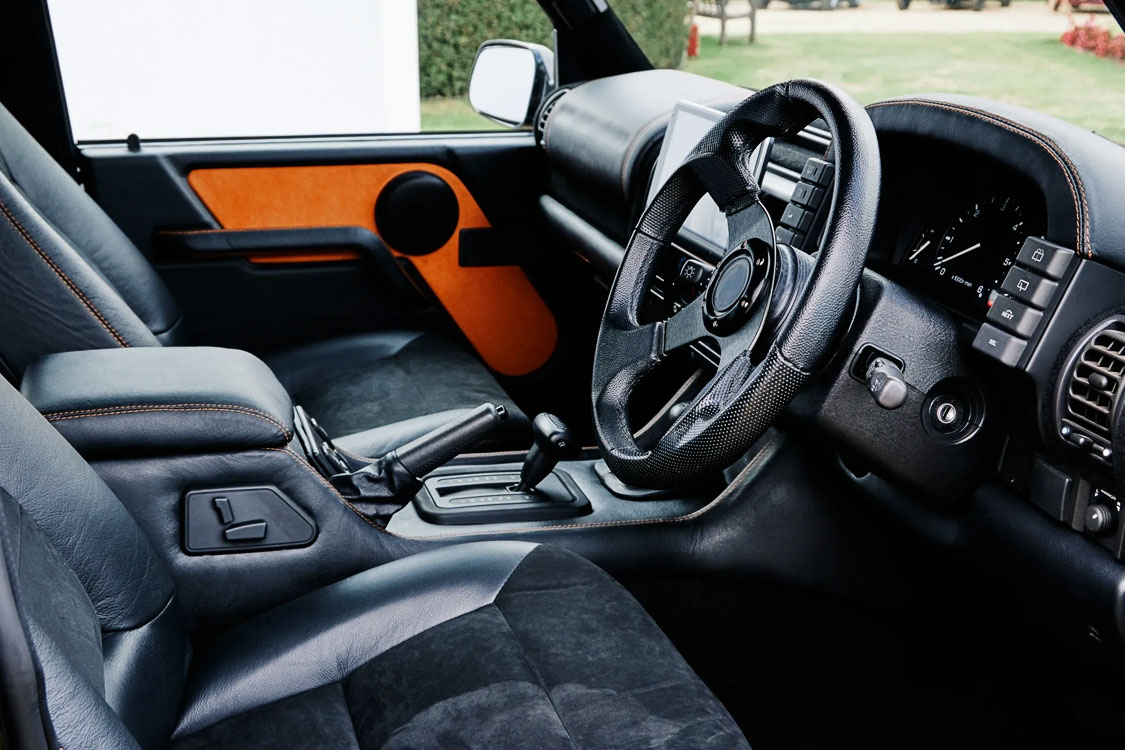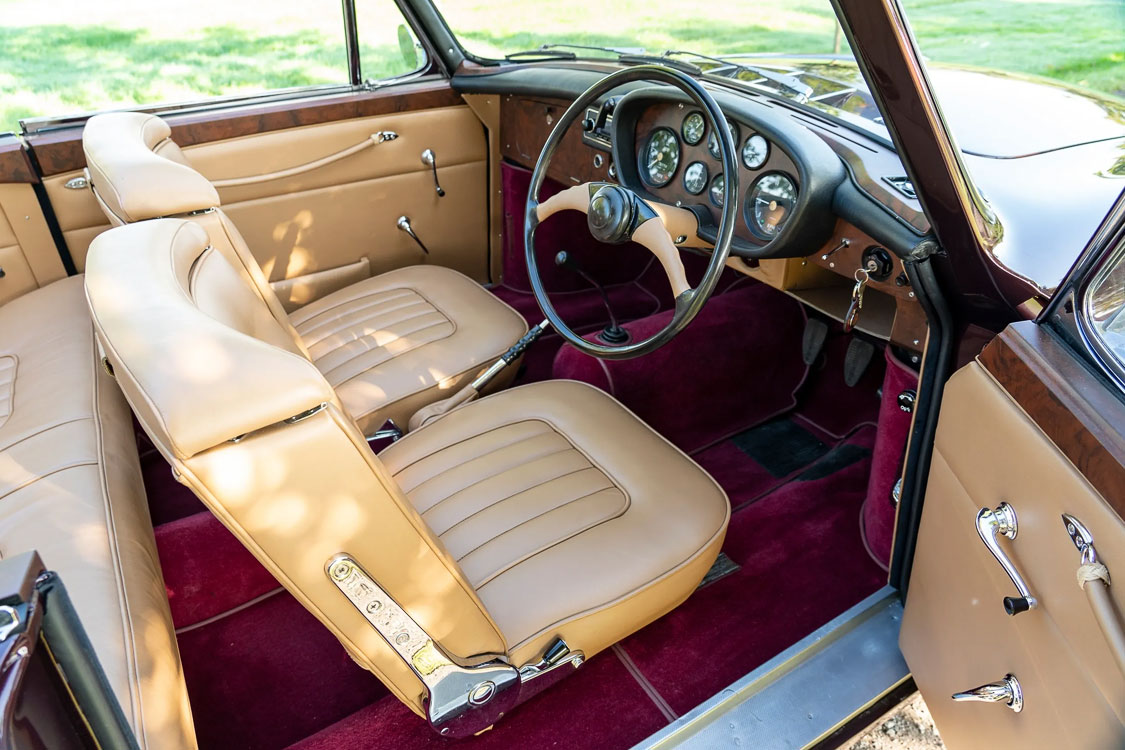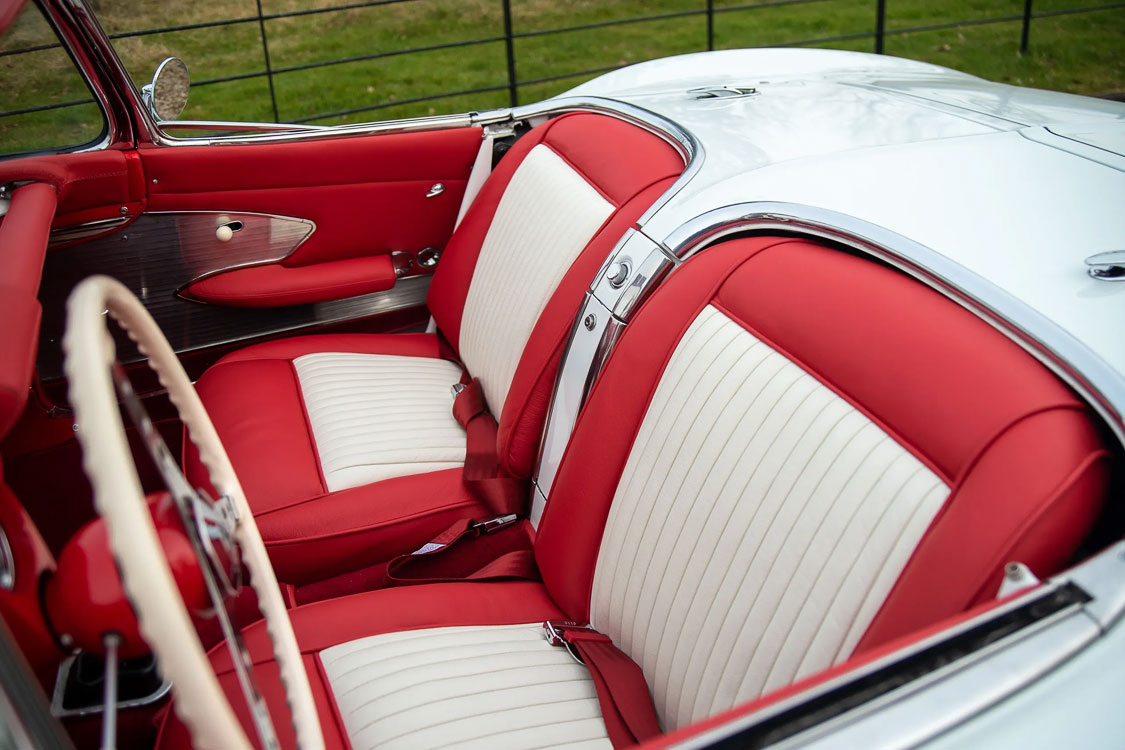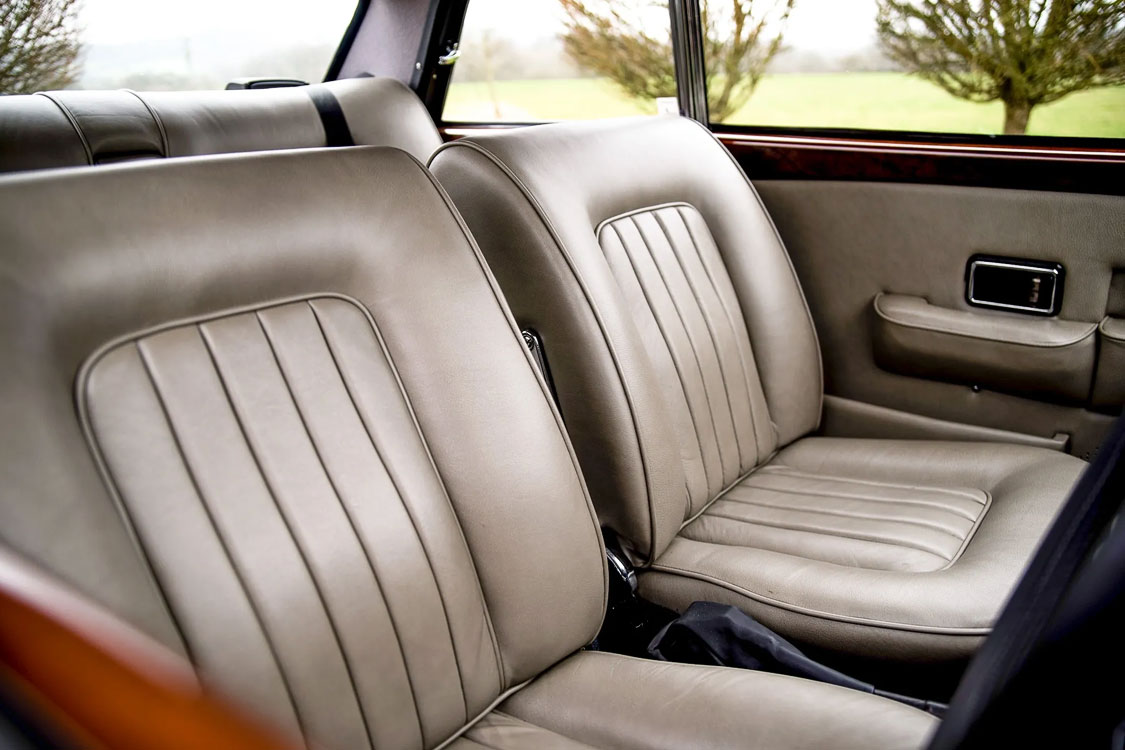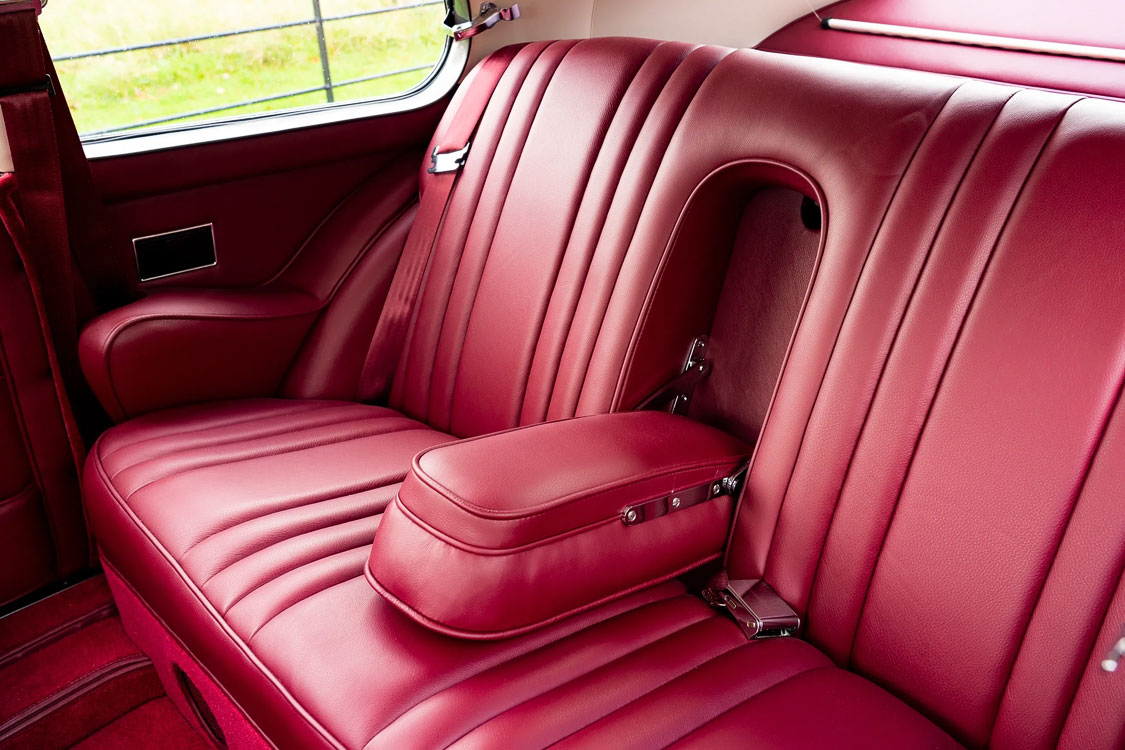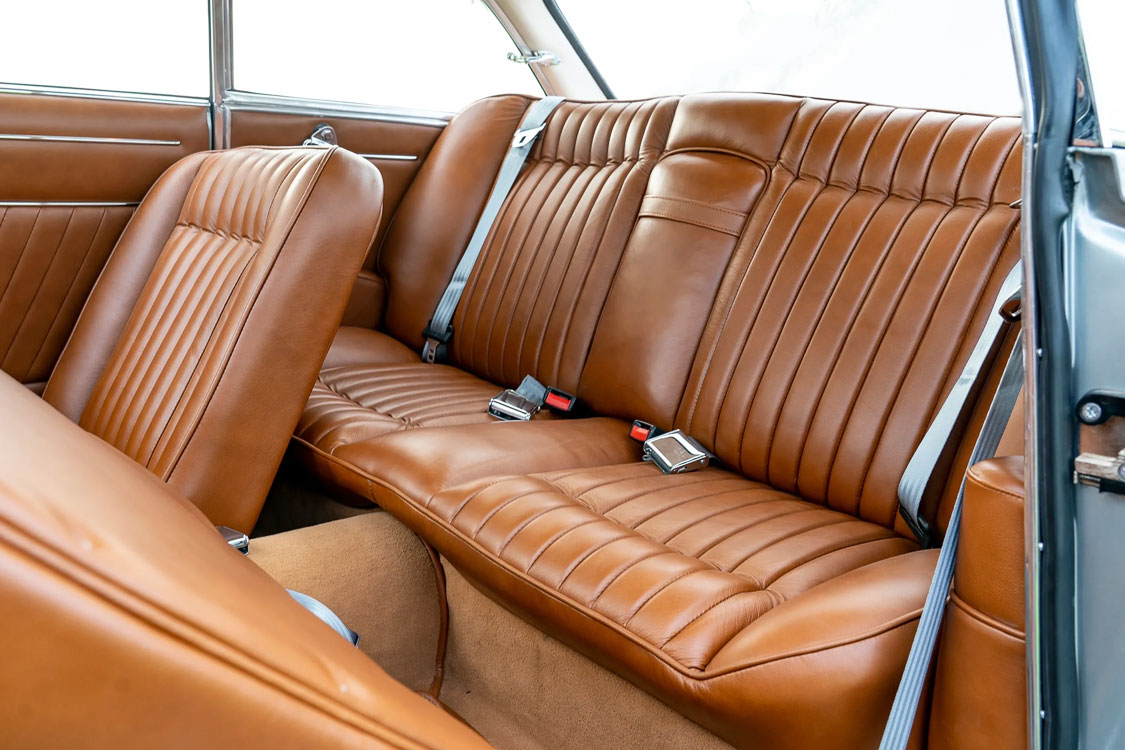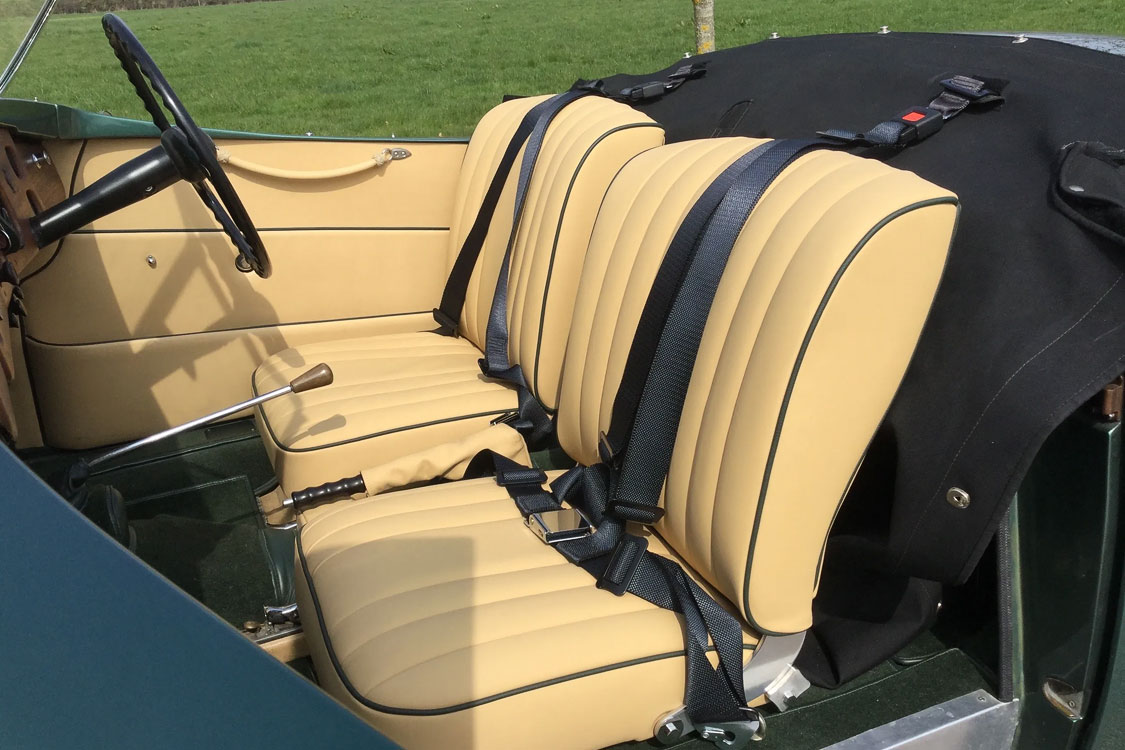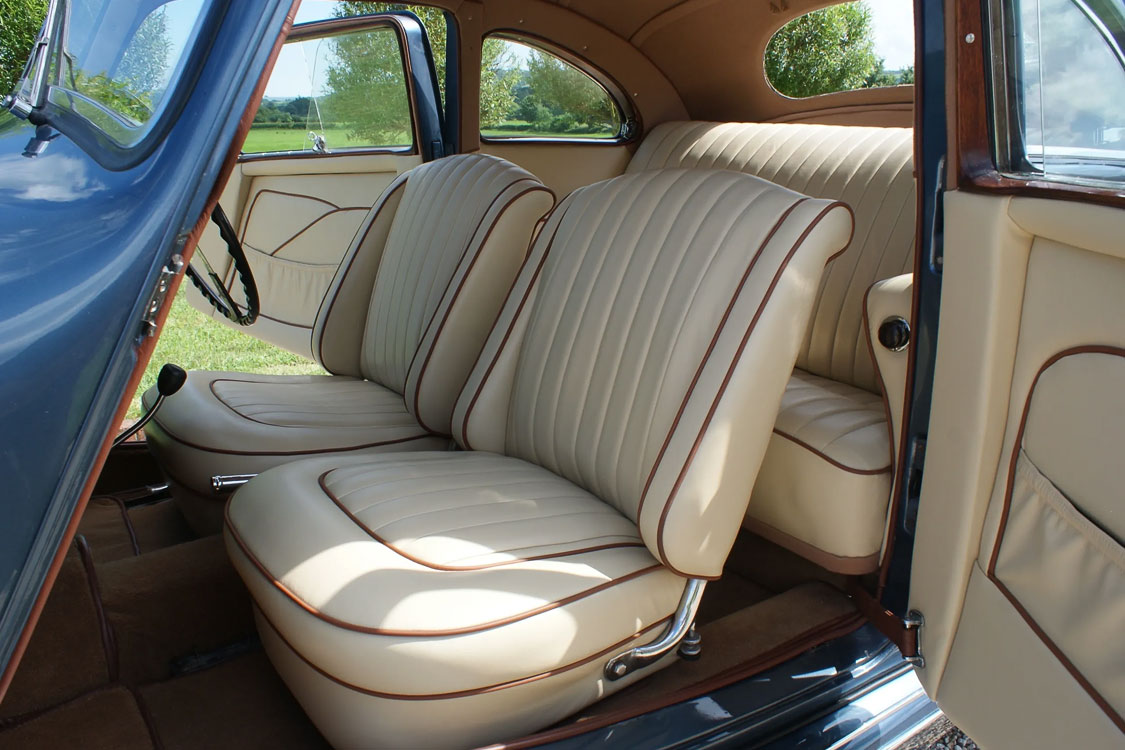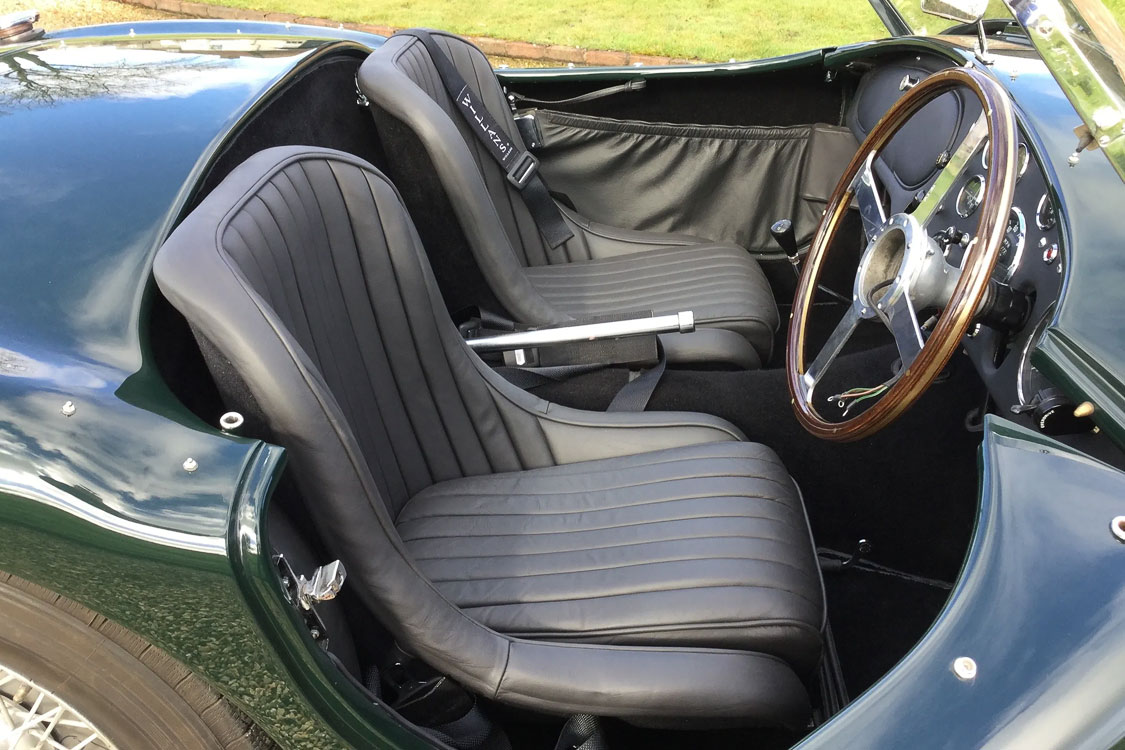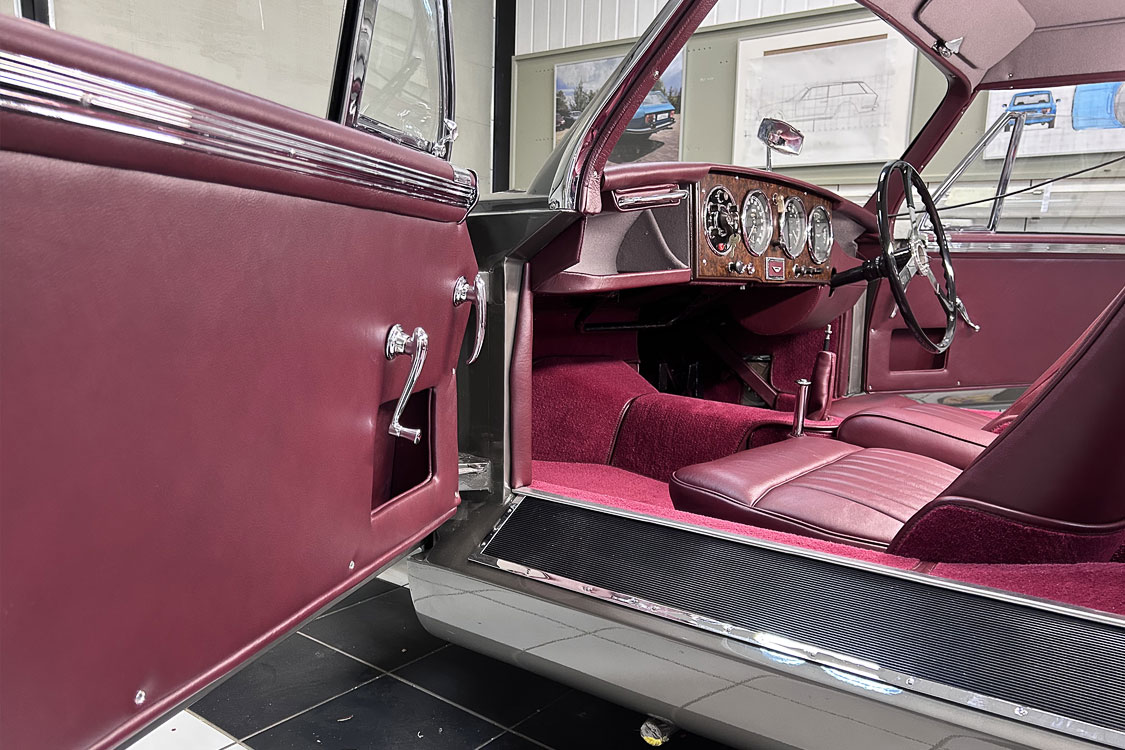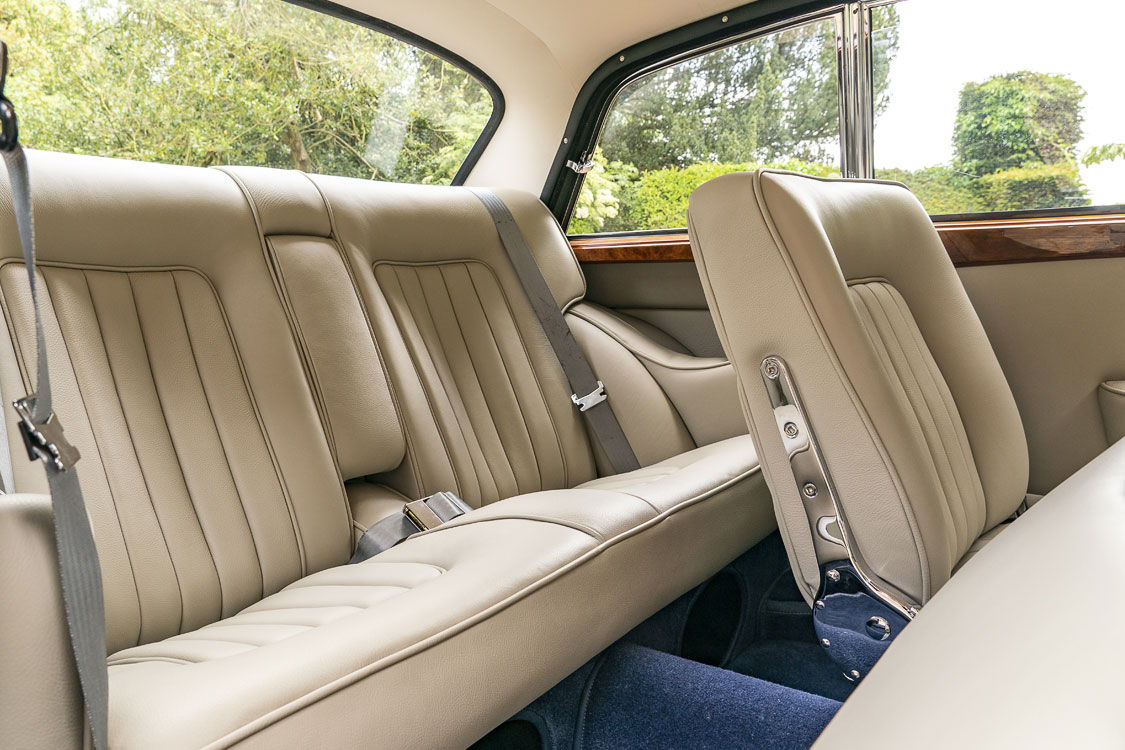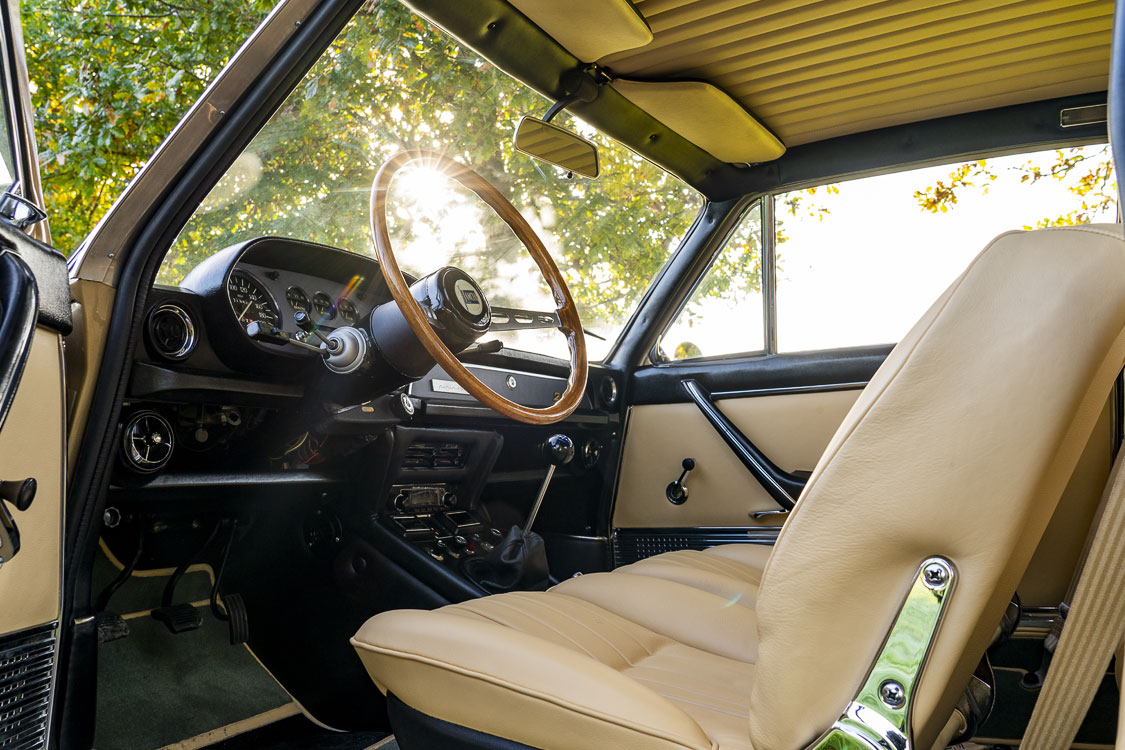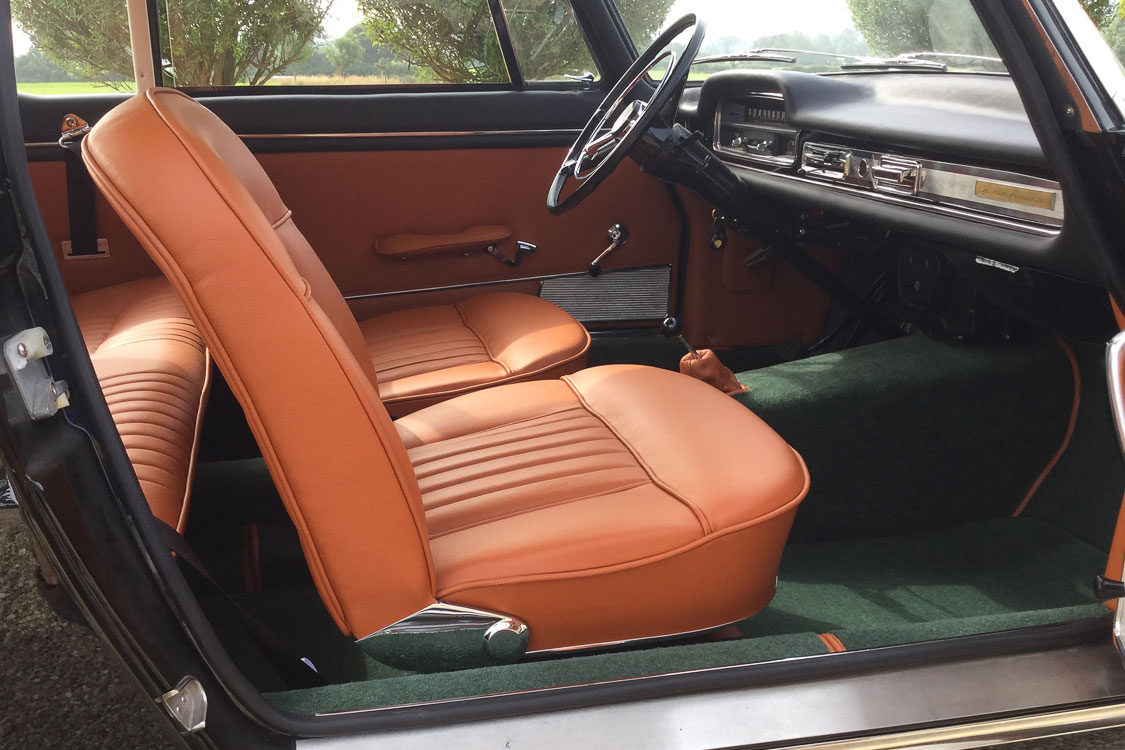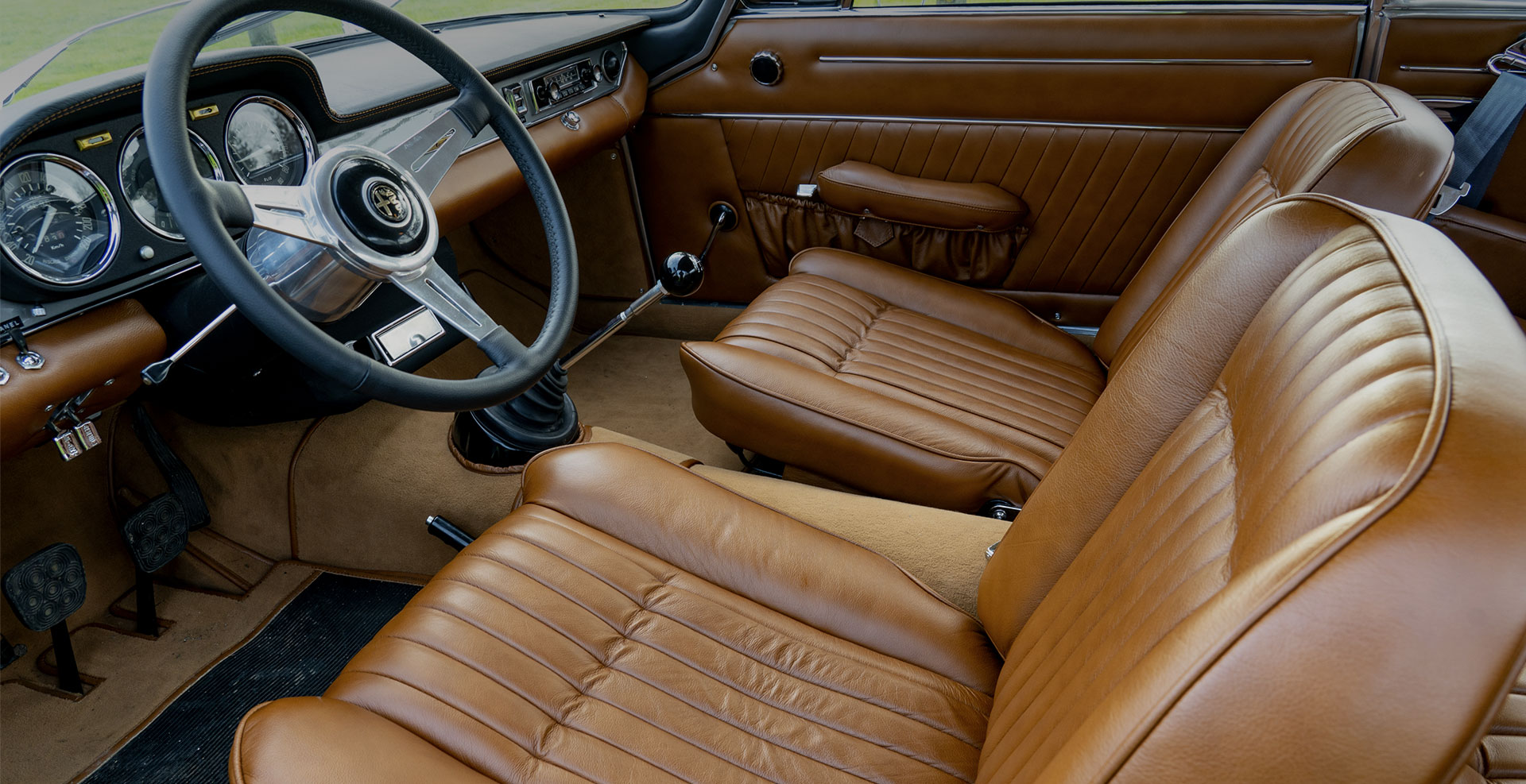
HC Classics
Auto Trimming
We are passionate about every aspect of classic car restoration and our core speciality has always been auto interiors.
When a classic car arrives at our Wiltshire workshop the original upholstery is often tired and worn; severely damaged seats and cracked hoods and tonneau covers are among the most common. Most of the time they are in such poor condition that no amount of TLC short of a full replacement will suffice. Here at HC Classics we source the highest quality leather, producing the finest finish possible, bringing each vehicle back to its former glory while being as sympathetic to the original as possible. On the occasions when the client wishes to use different colours, contrasting piping etc, we can offer a wide range of choices. We work closely with our clients to ensure they receive their desired finish.
As a natural product, leather likes to be fed and nourished to keep it soft and supple. A simple treatment two or three times a year can help maintain the leather’s condition and longevity. If it is kept clean and a regular regime is followed, there is no reason why your vehicle’s interior should not last for many years, even generations. If you buy a car with upholstery problems it will only get worse if untreated, this could seriously affect the value of your classic car. And, let’s face it, who wants to be driving a car that’s crumbling around them?
How to care for your interior.
Common problems, which can cause concern, are:
And finally…
Make sure that all leather areas of the car are treated. Do not cut corners or colours may change over time and neglected areas could become dry and cracked (unless the patchwork effect is what you’re going for?!).
The ideal time to carry out the work is often down to how and when you use the vehicle. Once in the winter is usually a good time, and once again in the spring.
Top Tip
If you take only one thing away from reading this, let it be this. Regular cleaning and maintenance without over application of products is the best way to enjoy your classic leather upholstery. Act quickly in the event of any damages.

